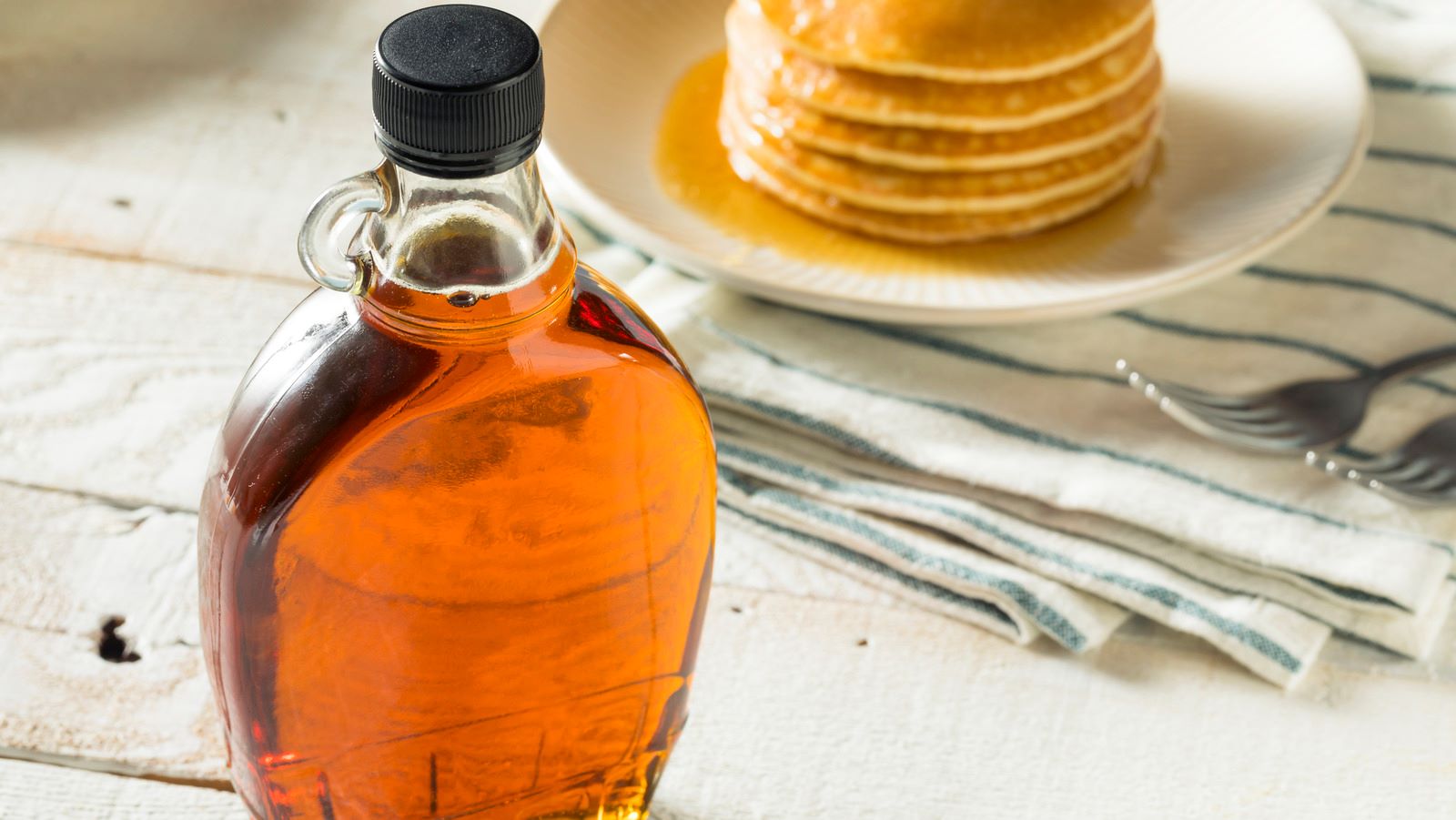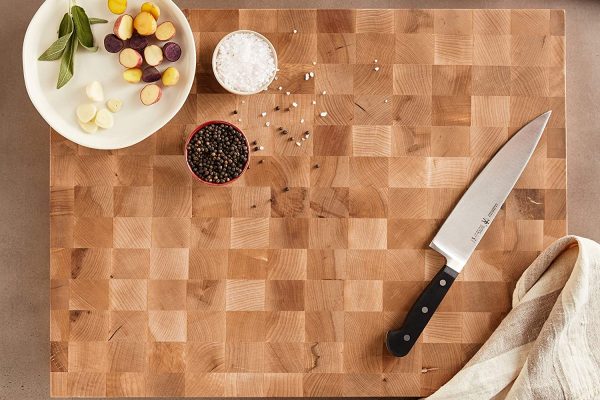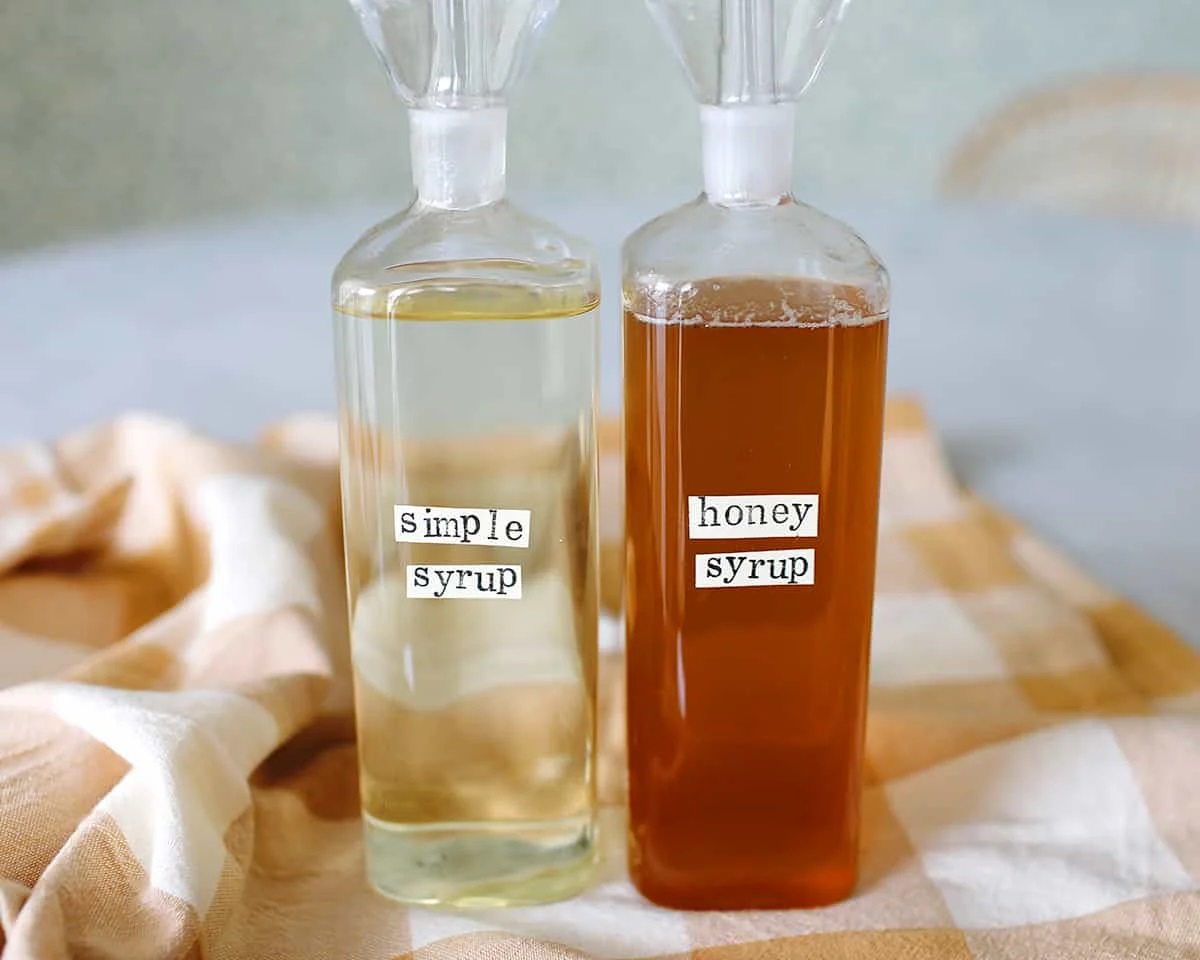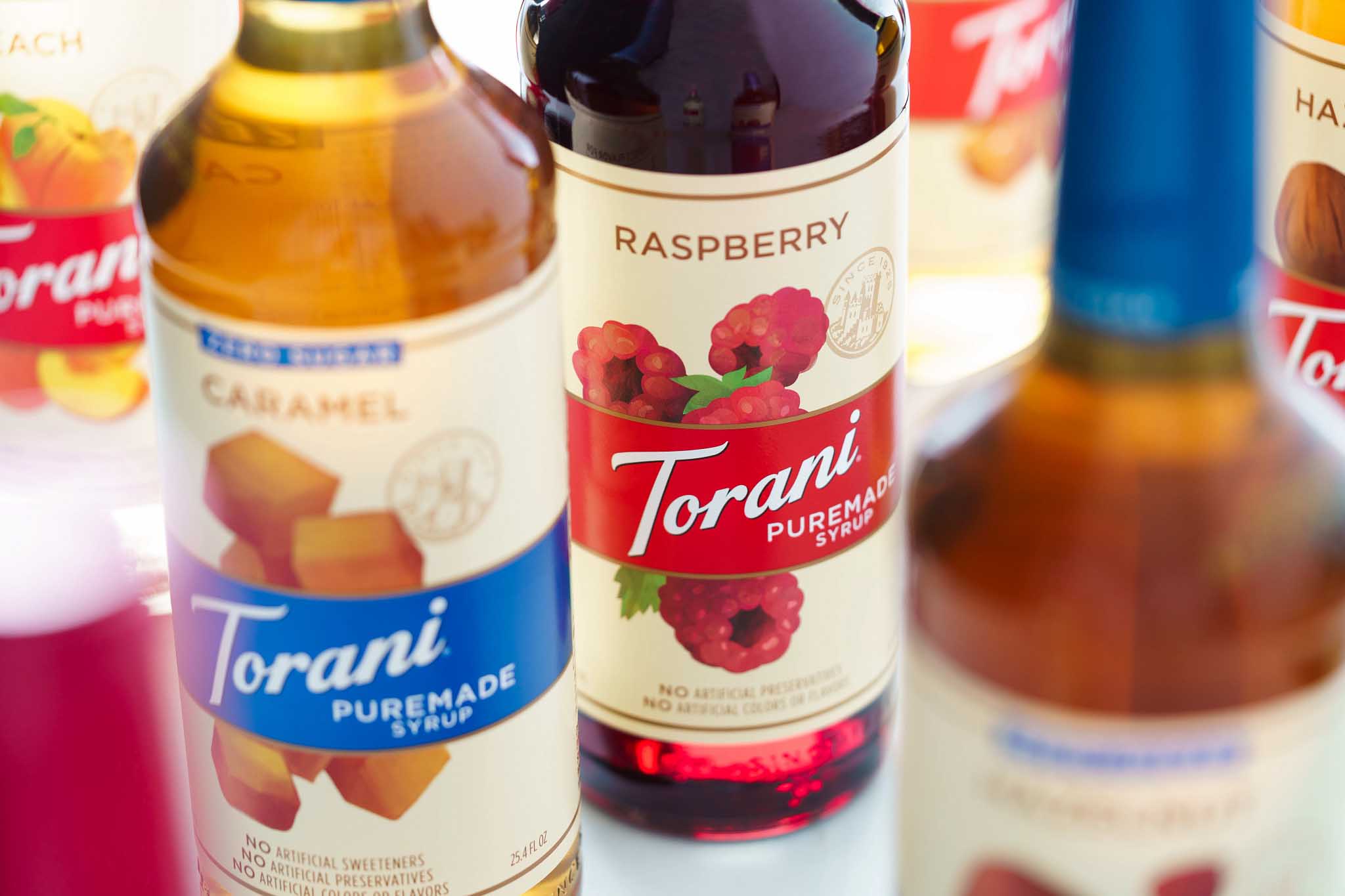

Articles
How To Store Maple Syrup Long Term
Modified: December 7, 2023
Learn how to store maple syrup long term with our informative articles. Find out the best methods to preserve the freshness and flavor of your favorite sweet treat.
(Many of the links in this article redirect to a specific reviewed product. Your purchase of these products through affiliate links helps to generate commission for Storables.com, at no extra cost. Learn more)
Introduction
Maple syrup is a delicious and versatile natural sweetener that is loved by many. Whether drizzled over pancakes, used in baking, or added to savory dishes for a touch of sweetness, maple syrup adds a unique flavor and richness. However, if you have a surplus of maple syrup or want to ensure its longevity, proper storage is essential.
Storing maple syrup correctly will not only help to maintain its quality and taste but also extend its shelf life. In this article, we will guide you through the process of storing maple syrup long-term, ensuring that it stays fresh and flavorful for an extended period.
Proper storage of maple syrup is crucial to prevent spoilage, maintain its natural properties, and preserve its delicious taste. If stored improperly, maple syrup can become contaminated or develop off-flavors, rendering it unsuitable for consumption.
The key to storing maple syrup successfully lies in ensuring that the containers used are suitable, the syrup is filtered properly, and the storage conditions are optimal. By following the steps outlined in this article, you can enjoy your precious maple syrup for an extended period without any concerns about its quality.
So, let’s delve into the world of proper storage techniques for maple syrup, starting with selecting the right containers.
Key Takeaways:
- Proper storage of maple syrup is crucial for maintaining its quality, flavor, and shelf life. Selecting the right containers, sterilizing them, and filtering the syrup are key steps to ensure freshness and longevity.
- Storing maple syrup at the ideal temperature, regularly inspecting and rotating stock, and following tips for prolonging shelf life are essential practices for enjoying delicious maple syrup for an extended period.
Read more: How To Store Maple Syrup
Importance of Proper Storage
Proper storage of maple syrup is essential for maintaining its quality, flavor, and shelf life. Here are a few reasons why proper storage is crucial:
- Prolong shelf life: Maple syrup is a perishable product, and without proper storage, it can spoil quickly. By storing it correctly, you can extend its shelf life and enjoy your maple syrup for a longer period.
- Maintain taste and quality: Maple syrup has a distinct flavor profile that can be affected by improper storage. Exposure to air, heat, or contaminants can cause the syrup to develop off-flavors or spoil. Proper storage techniques help to preserve the taste and quality of the syrup.
- Prevent contamination: Maple syrup can be susceptible to bacteria, mold, and yeast growth if not stored properly. These microorganisms can contaminate the syrup and make it unsafe for consumption. Proper storage methods help to minimize the risk of contamination.
- Safeguard nutritional value: Maple syrup contains essential nutrients and antioxidants. Proper storage helps to preserve these nutrients and ensure that you can enjoy all the health benefits that maple syrup has to offer.
By understanding the importance of proper storage, you can ensure that you get the most out of your maple syrup and enjoy it at its best. Now, let’s proceed to the next step, which is selecting the right containers for storing maple syrup.
Selecting the Right Containers
Choosing the right containers is crucial for storing maple syrup long-term. Here are some factors to consider when selecting containers:
- Material: Opt for containers made of food-grade materials, such as glass or plastic. These materials ensure that the containers do not leach any harmful chemicals into the syrup and maintain its quality.
- Tight-sealing lids: Make sure the containers have tight-sealing lids to prevent air and contaminants from entering. This helps to maintain the freshness and flavor of the maple syrup.
- Size: Choose containers that are appropriately sized for the amount of maple syrup you will be storing. It is best to use smaller containers, as once opened, maple syrup should be consumed within a few weeks to maintain its best quality.
- Stackability: If you have limited storage space, consider using containers that are stackable. This will help to maximize the available space and ensure efficient storage.
One option for storing maple syrup is using glass Mason jars with metal lids. These jars are a popular choice as they are easily available, non-reactive, and provide a tight seal. Plastic containers, such as HDPE bottles, can also be suitable options if they are made of food-grade material and have secure lids.
It is important to note that whichever containers you choose, they should be thoroughly cleaned and sterilized before use to ensure the hygiene of the maple syrup. In the next section, we will discuss how to sterilize the containers properly.
Sterilizing the Containers
Before filling them with maple syrup, it is crucial to sterilize the containers to ensure that they are clean and free from any contaminants. Here is a step-by-step guide on sterilizing the containers:
- Step 1: Gather the necessary materials: You will need a large pot, a rack or trivet to place inside the pot, and the containers you will be using.
- Step 2: Clean the containers: Start by washing the containers and lids with hot, soapy water. Rinse them thoroughly to remove any soap residue.
- Step 3: Prepare the pot: Fill the pot with enough water to fully submerge the containers. Place the rack or trivet inside the pot to elevate the containers and prevent them from direct contact with the bottom of the pot.
- Step 4: Bring the water to a boil: Place the pot on the stovetop and heat the water until it reaches a rolling boil.
- Step 5: Submerge the containers: Carefully lower the cleaned containers into the boiling water using tongs or a jar lifter. Make sure they are fully submerged in the water.
- Step 6: Boil the containers: Allow the containers to boil in the water for at least 10 minutes. This will help to kill any remaining bacteria or contaminants.
- Step 7: Remove and dry the containers: Using tongs or a jar lifter, carefully remove the containers from the boiling water and place them on a clean towel or drying rack. Allow them to air dry completely.
By sterilizing the containers, you are taking an important step in ensuring the cleanliness and hygiene of the maple syrup storage process. Clean containers help to minimize the risk of microbial growth and maintain the quality of the syrup. Next, we will discuss the importance of filtering the maple syrup before storing it.
Filtering the Maple Syrup
Filtering maple syrup is an essential step before storing it long-term. This process helps remove any impurities, such as debris, sediment, and sugar sand, to ensure that the syrup remains clear, smooth, and free from any unwanted particles. Here’s how you can filter your maple syrup:
- Step 1: Gather the necessary materials: You will need a fine-mesh strainer or cheesecloth, a funnel, and a clean container to catch the filtered syrup.
- Step 2: Preparing the filter: If using cheesecloth, fold it to create multiple layers, ensuring that it fits securely in the strainer or funnel. If using a fine-mesh strainer, make sure it is clean and free from any debris.
- Step 3: Filtering the syrup: Place the strainer or funnel on top of the clean container. Pour the maple syrup through the strainer or cheesecloth-lined funnel, allowing it to pass through and collect in the container. This will help remove any impurities and ensure a smooth texture.
- Step 4: Discarding the filtered impurities: As you filter the syrup, you may notice impurities collecting on the strainer or cheesecloth. Once the filtering process is complete, discard these impurities properly.
Filtering the maple syrup helps improve its appearance, texture, and overall quality. It removes any unwanted particles that may affect the taste or texture of the syrup. Once your maple syrup is filtered and free from impurities, you are ready to proceed to the next step, which is filling and sealing the storage containers.
Read more: How To Store Homemade Maple Syrup
Filling and Sealing the Containers
Once you have sterilized the containers and filtered the maple syrup, it is time to fill and seal the containers properly. Here’s a step-by-step guide to help you with this process:
- Step 1: Prepare the containers: Make sure the containers are clean, dry, and ready for filling. Ensure that the lids are also clean and in good condition.
- Step 2: Position the containers: Place the containers on a stable and level surface. This will make it easier to fill them without spillage.
- Step 3: Fill the containers: Using a funnel, carefully pour the filtered maple syrup into each container, leaving about 1/4th to 1/2 inch of headspace at the top. This headspace allows for expansion during freezing or refrigeration.
- Step 4: Remove air bubbles: After filling each container, gently tap or swirl them to remove any trapped air bubbles. This helps to ensure the syrup is evenly distributed and prevents potential spoilage.
- Step 5: Seal the containers: Securely screw or seal the lids onto the containers. Make sure they are tight and properly sealed to prevent any air or contaminants from entering.
- Step 6: Clean the containers: Wipe away any spills or drips on the outside of the containers. This will help to maintain cleanliness and prevent any potential stickiness.
Filling and properly sealing the containers is crucial to ensure that the maple syrup remains fresh and uncontaminated during storage. A well-sealed container helps to maintain the syrup’s quality and prevents spoilage. In the next section, we will discuss the importance of labeling and dating the storage containers.
Store maple syrup long term by keeping it in a cool, dark place, such as a pantry or cellar. Make sure the container is tightly sealed to prevent air from getting in and causing spoilage.
Labeling and Dating the Containers
Labeling and dating the containers is an important step when storing maple syrup long-term. Proper labeling provides crucial information about the syrup and helps you keep track of its freshness. Here’s how you can effectively label and date your maple syrup containers:
- Step 1: Gather the necessary materials: You will need adhesive labels or waterproof markers, and a pen or marker for writing.
- Step 2: Labeling the containers: Write “Maple Syrup” or “Pure Maple Syrup” prominently on each container to easily identify the contents.
- Step 3: Date the containers: Write the date of filling or the expiration date on each label. This helps you keep track of how long the maple syrup has been stored and ensures you consume it within the recommended time frame.
- Step 4: Additional information: If desired, you can add additional information on the label such as the grade or flavor of the maple syrup. This is especially helpful if you have multiple types of maple syrup stored.
- Step 5: Attach the labels: Affix the labels securely to the containers. Ensure that they are placed in a visible and easily readable location.
Properly labeling and dating the containers allows you to identify the contents and keep track of their freshness. This way, you can prioritize consuming the oldest maple syrup first, ensuring minimal waste and the best flavor. Moving forward, let’s explore the ideal temperature for storing maple syrup.
Storing Maple Syrup at the Ideal Temperature
The temperature at which you store maple syrup plays a crucial role in maintaining its quality and prolonging its shelf life. Here are some guidelines on storing maple syrup at the ideal temperature:
- Refrigeration: Maple syrup can be stored in the refrigerator to keep it fresh for an extended period. The ideal temperature for refrigeration is between 32°F (0°C) and 40°F (4°C). Make sure to place the containers in the coldest part of the refrigerator, away from any strong odors.
- Freezing: If you intend to store maple syrup for an even longer period, freezing is an option. Maple syrup can be safely frozen without affecting its taste or quality. It is best to use airtight containers, leaving some room for expansion, and store them in the freezer at a temperature of 0°F (-18°C) or below.
- Avoiding temperature fluctuations: Consistency is key when storing maple syrup. Avoid drastic temperature changes as they can cause condensation and affect the syrup’s texture and taste. If you choose to refrigerate or freeze maple syrup, try to maintain a constant temperature.
By storing your maple syrup at the ideal temperature, you ensure that it retains its flavor, consistency, and quality for a longer period. Now that you know the optimal storage temperature, let’s move on to the importance of regularly inspecting and rotating your syrup stock.
Regularly Inspecting and Rotating Stock
Regularly inspecting and rotating your maple syrup stock is a crucial practice to ensure that the syrup remains fresh and maintains its quality over time. Here’s why it’s important to regularly check and rotate your maple syrup:
- Checking for signs of spoilage: Regular inspection allows you to look for any signs of spoilage, such as mold growth, off odor, or discoloration. If any containers show signs of spoilage, it’s important to discard them immediately to prevent contamination of the rest of your stock.
- Preventing flavor degradation: Over time, even when properly stored, the flavor of maple syrup can gradually change. By periodically inspecting the stock, you can identify any changes or flavor degradation and make a plan to utilize the older syrup first to prevent waste.
- Rotating stock for freshness: Maple syrup doesn’t last forever, even with proper storage. By implementing a rotation system, where you consistently use the oldest syrup first and replenish your stock with fresher syrup, you ensure that you always have the best quality syrup on hand.
To practice proper inspection and rotation of your maple syrup stock, follow these guidelines:
- Regularly check the containers: Set a schedule to inspect your maple syrup containers at least every few months. Look for any signs of spoilage, including mold, unusual aroma, or visible changes in color or texture.
- Use the oldest syrup first: When reaching for maple syrup, select the containers with the earliest dates or those that have been in storage the longest. This helps in utilizing the syrup before it starts to degrade in flavor and quality.
- Rotate stock during replenishment: When adding new syrup to your stock, place it at the back of the storage area, pushing the older containers to the front. This ensures that the older syrup is used first.
By regularly inspecting and rotating your maple syrup stock, you can ensure that you are consuming the freshest and best-quality syrup while minimizing waste. Now, let’s move on to some tips for prolonging the shelf life of maple syrup.
Read more: How To Store Maple Syrup After Opening
Tips for Prolonging Maple Syrup Shelf Life
While proper storage techniques go a long way in preserving the shelf life of maple syrup, here are some additional tips to help prolong its freshness and quality:
- Keep containers tightly sealed: After each use, make sure to tightly seal the containers to prevent air from entering and causing spoilage. This helps maintain the syrup’s freshness.
- Avoid cross-contamination: When using maple syrup, make sure to use clean utensils to prevent cross-contamination with other food items. This reduces the risk of introducing bacteria or other contaminants into the syrup.
- Avoid direct sunlight: Store maple syrup away from direct sunlight, as exposure to UV rays can degrade the syrup’s quality and flavor over time.
- Avoid temperature fluctuations: Keep maple syrup away from temperature fluctuations, as it can cause condensation and affect the quality of the syrup. Maintain a consistent storage temperature, whether in the refrigerator or freezer.
- Only open what you need: It is best to open and use one container of maple syrup at a time. Opening multiple containers at once exposes the syrup to air, reducing its shelf life.
- Store in smaller quantities: If possible, store maple syrup in smaller containers rather than in large ones. This reduces the frequency of opening and closing containers, exposing the syrup to air and moisture.
- Follow recommended expiration dates: Maple syrup does have a shelf life, even with proper storage. Be sure to follow the recommended expiration dates and consume the syrup within the suggested timeframe for the best freshness and flavor.
By implementing these tips, you can prolong the shelf life of your maple syrup and ensure that it remains fresh and delicious. Remember, proper storage, regular inspection, and smart rotation are key to maintaining the quality of your syrup. Now, let’s conclude our discussion on storing maple syrup long-term.
Conclusion
Proper storage is essential for maintaining the freshness, quality, and longevity of maple syrup. By following the steps outlined in this article, you can ensure that your maple syrup stays delicious and usable for an extended period. Here’s a recap of the key points we’ve discussed:
First and foremost, selecting the right containers is crucial. Opt for food-grade materials like glass or plastic that have tight-sealing lids to prevent air and contaminants from entering.
Sterilizing the containers before filling them is important to ensure the cleanliness and hygiene of the storage process. Boil the containers for at least 10 minutes to kill any bacteria or contaminants.
Filtering the maple syrup helps remove impurities and ensures a smooth texture. Use a fine-mesh strainer or cheesecloth to strain the syrup and eliminate any debris or sediment.
Filling and sealing the containers properly is essential to prevent air and contaminants from entering. Leave some headspace to allow for expansion during freezing or refrigeration.
Labeling and dating the containers helps you keep track of the syrup’s freshness and use the oldest syrup first. Always use the proper labeling to identify the contents and write the date of filling or expiration.
Storing maple syrup at the ideal temperature, whether refrigeration or freezing, is crucial. Maintain consistent temperatures, avoid temperature fluctuations, and store away from direct sunlight.
Regularly inspecting and rotating your syrup stock allows you to identify spoilage and ensure you consume the oldest syrup first. By implementing a rotation system, you can always have the freshest syrup available.
Finally, follow the tips for prolonging maple syrup shelf life, such as keeping containers tightly sealed, avoiding cross-contamination, and storing in smaller quantities.
By following these guidelines and practicing proper storage techniques, you can enjoy the rich flavor of your maple syrup for an extended period. So, go ahead and store your maple syrup with confidence, knowing that it will remain delicious and ready to enhance your favorite dishes.
Frequently Asked Questions about How To Store Maple Syrup Long Term
Was this page helpful?
At Storables.com, we guarantee accurate and reliable information. Our content, validated by Expert Board Contributors, is crafted following stringent Editorial Policies. We're committed to providing you with well-researched, expert-backed insights for all your informational needs.














0 thoughts on “How To Store Maple Syrup Long Term”